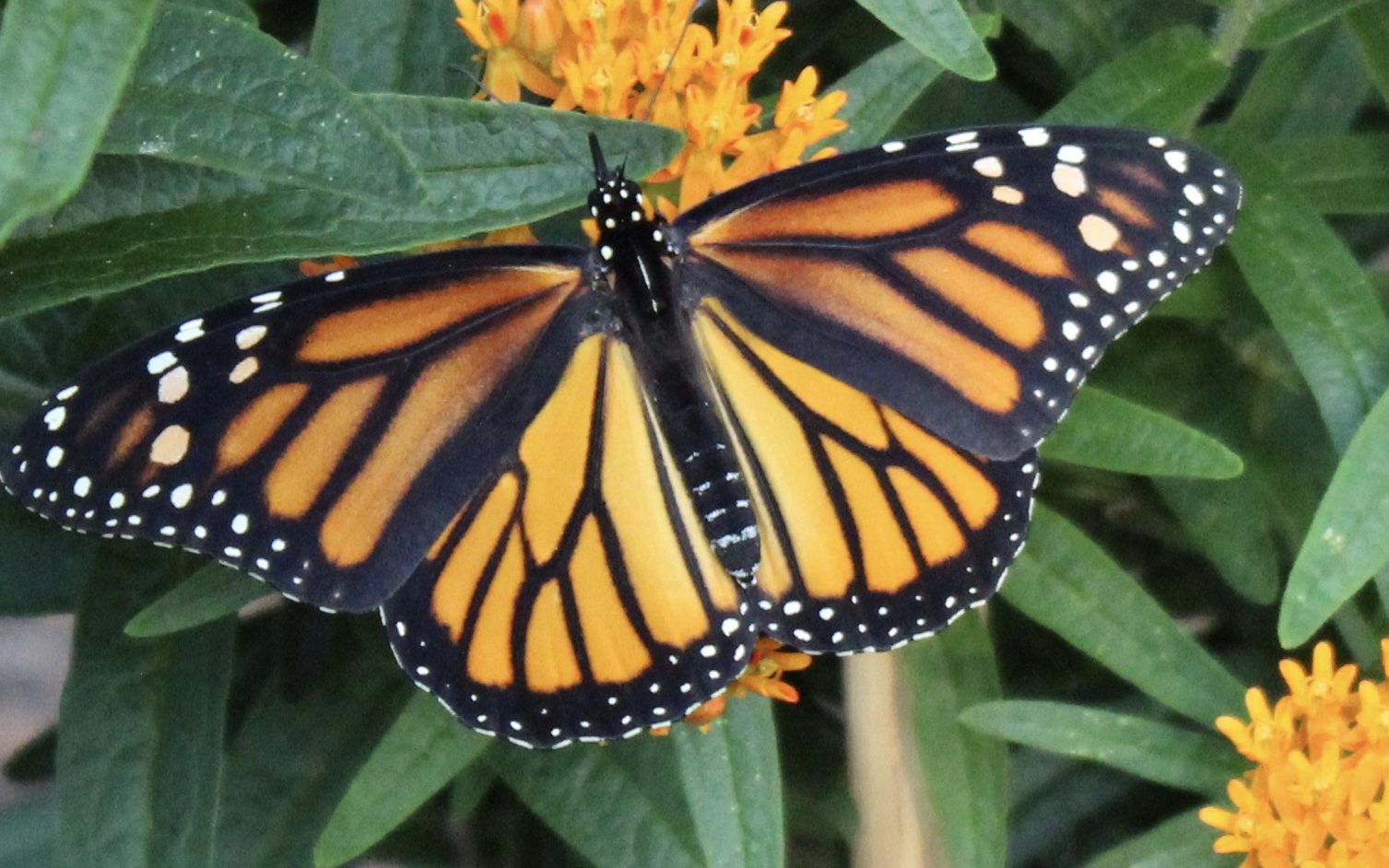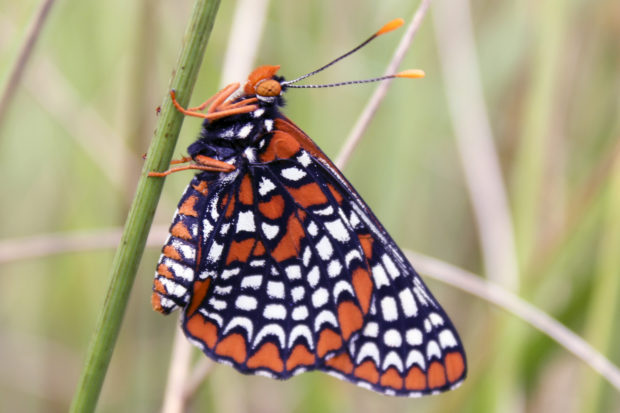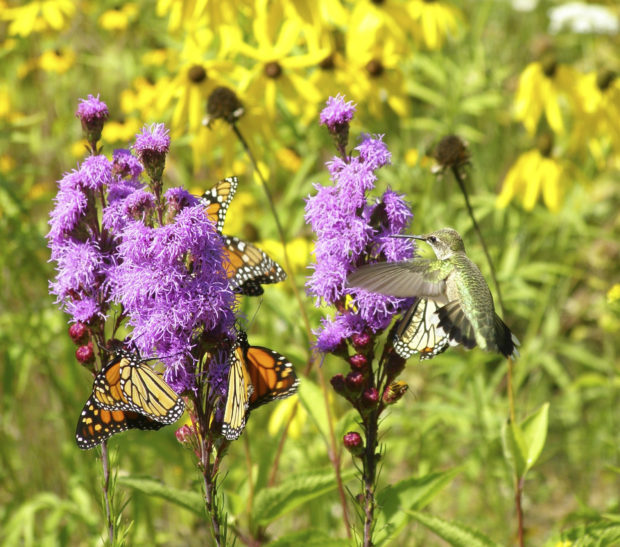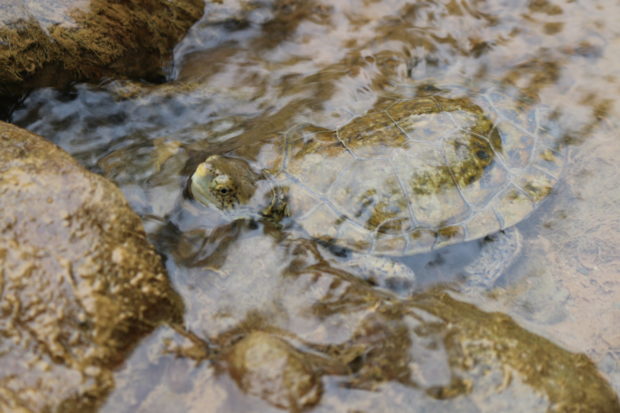We have much more to do and your continued support is needed now more than ever.
Calling All Gardeners: Dig in NOW to Pass the Recovering America’s Wildlife Act

From using native plants to transform yards into wildlife habitats to meeting the Million Pollinator Garden Challenge, gardeners are a powerful force for the future of wildlife and native plants.
Now, with mounting threats to bees, butterflies, hummingbirds, and pollinators, we have no time to lose to act on their behalf. The good news? The bipartisan Recovering America’s Wildlife Act is on its way to passing Congress and becoming law by this summer—if all who care step up today.
Spread the word
Please spread the word and mobilize your member groups to help pass this once-in-a-generation bill, which dedicates $1.4 billion annually to state wildlife agencies and tribes.
The investment is essential for the future of 12,000 species at risk—from tree frogs to native wildflowers. The focus is on proactive and voluntary conservation to prevent species from becoming endangered.
We know from success stories that we can bring back wildlife, if we care enough, work together, and invest in their future. That’s exactly what this Act will do with climate resilient solutions—from conserving and restoring habitats to engaging more people in planting pollinator and bird-friendly gardens.
Together, we can assure that the children of tomorrow will know a hummingbird hovering among wildflowers and the migration of monarch butterflies. Tell your friends. Enlist others. Let’s pass the Recovering America’s Wildlife Act.
Meet some of the wildlife from across the country, that will benefit from your support of the Recovering America’s Wildlife Act:
Baltimore Checkerspot Butterfly (Maryland)

Named Maryland’s State Insect in 1973 when this butterfly was common, today Baltimore checkerspots are in decline, likely from habitat loss and deer browse of the caterpillar host plant. The new funding will support the Baltimore Checkerspot Recovery Team’s efforts to raise and release checkerspots and to conserve and enhance habitat.
Monarch Butterfly (Midwestern States and California)

The monarch butterfly’s long distance, multi-generational migration is a wonder of the natural world. But habitat loss in the U.S. and on their wintering grounds in Mexico has sent the monarchs into a sharp decline—with Midwest populations dwindling 90 percent in two decades, and California monarchs dropping 86 percent in 2017-2018. Both populations are now considered for endangered species listing. Recovering America’s Wildlife Act will fund conservation efforts that cross national borders, planting milkweed and other native plants, and restoring habitat—actions that benefit farmers, gardeners, and the economy.
Indiana Bat (Kentucky)

An Indiana bat will eat as many as 3,000 insects on a summer evening, including many crop pests. But disturbance of their bat caves has led to far fewer bats, resulting in a listing under the Endangered Species Act. The newest threat is a deadly fungus called white-nose syndrome. So far, Kentucky’s Indiana bats have avoided major declines from the disease and are critical for rebuilding populations elsewhere. Funding from the Recovering America’s Wildlife Act will help protect bat colonies that are unaffected by white-nose syndrome and fund research on how to stop the disease.
Native Prairie and Wildflowers (Iowa)

The Iowa Department of Natural Resources’ Prairie Resources Unit grows more than 65 species of Iowa-origin prairie grasses and wildflowers that once covered 70-80% of the Iowa landscape. These plants are now bringing the prairie back to public lands. Several of these plant species are host plants for at-risk caterpillars. Increased funds will allow this unit to grow additional host plant species to support a growing list of butterflies. The Prairie Resources Unit routinely partners with local gardening/conservation groups, colleges, and other civic organizations to teach about native plants and their importance to Iowa’s heritage.
Tree Frog (New Jersey)

The Pine Barrens treefrog is a strikingly colored frog with a bright green ground color and a lavender stripe that runs along the sides of its body. The familiar call is a distinctive nasally “quonk, quonk, quonk.” This species requires pristine breeding ponds featuring the acidic waters characteristic of the New Jersey Pine Barrens. While much of the Pine Barrens have been preserved via the state’s land preservation efforts and creation of the Pinelands National Reserve, persisting threats remain of habitat loss, fragmentation, and the destruction or pollution of breeding pools. The Recovering America’s Wildlife Act will fund important conservation for tree frogs and other wildlife.
Western Pond Turtle (Pacific Northwest)

Once common, this turtle has plunged toward a potential listing under the Endangered Species Act. Funding from the Recovering America’s Wildlife Act will reduce risks from being struck by cars when crossing roads, control invasive plants that harm nesting sites, provide more nesting habitat and prevent disturbances, provide structures for turtles to bask upon, and protect upland habitat adjacent to water.
READY TO DO EVEN MORE FOR THE RECOVERING AMERICA’S WILDLIFE ACT?
We are racing toward the finish line with a goal of a vote in both chambers by June to pass the Act and send it to the President’s desk to sign. First, take action.
Next, are you a member of a local gardening group or other organization that cares about wildlife? Please ask them to sign our letter to Congress. 1700 groups have already signed, help us get to 2000!




















